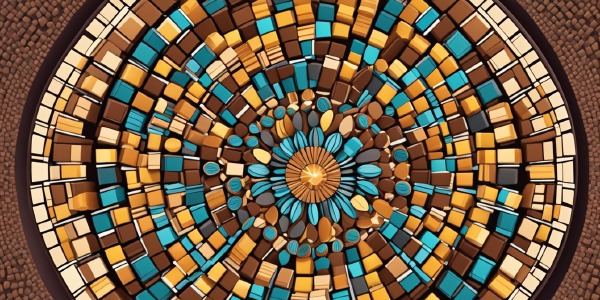Mandalas in Fashion: Embracing Spiritual Patterns in Your Wardrobe
Mandalas have transcended their spiritual origins to become a vibrant element in the world of fashion. These intricate designs, characterized by repeating patterns and a circular motif, are emblematic of harmony and unity. They can be spotted on a variety of garments, ranging from elaborate dresses to casual t-shirts, infusing a sense of balance and calm into everyday attire.
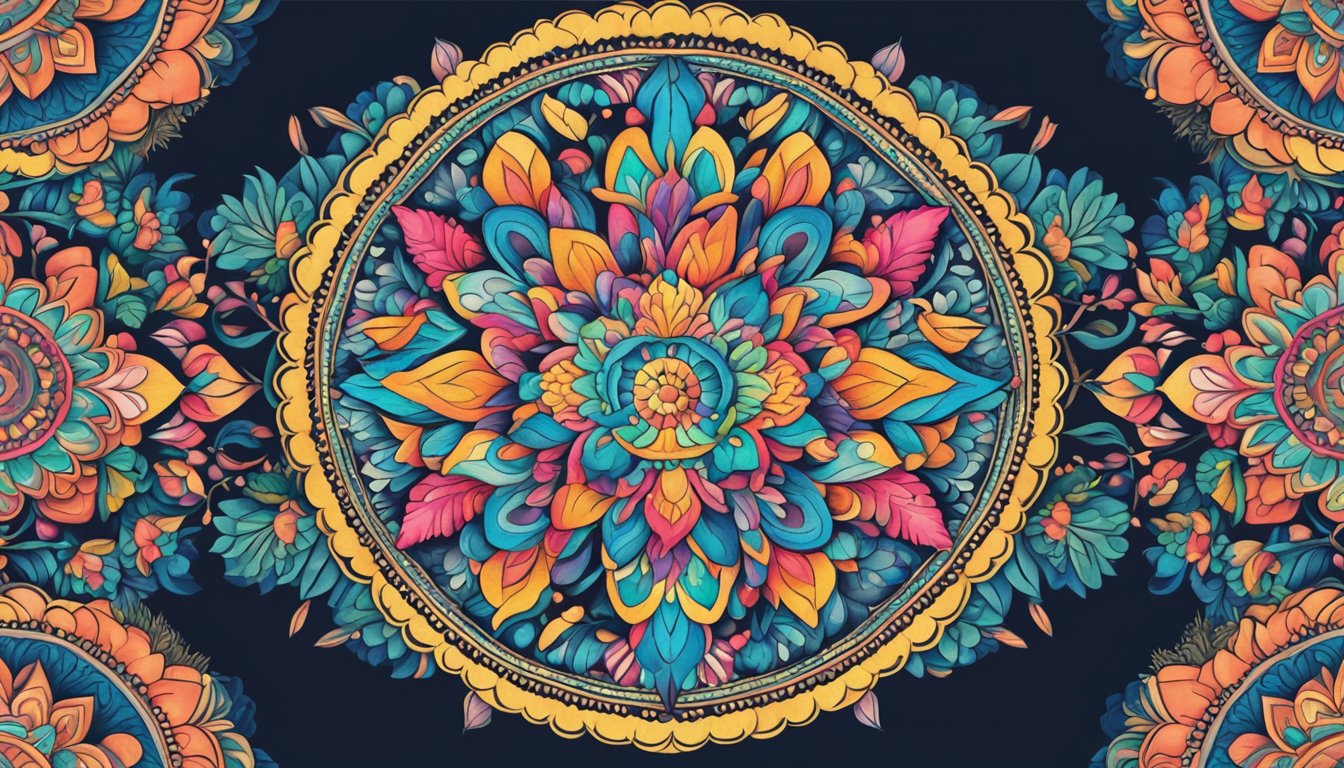
In accessories, mandalas are equally prevalent. They adorn scarves, bags, and jewelry, bringing with them an air of contemplation and depth. Fashion aficionados often welcome these designs for their versatility and the touch of mindfulness they add to both high fashion and streetwear.
Mandalas in fashion are more than just a trend; they represent a fusion of art and spirituality that appeals to a broad audience. Their presence in clothing and accessories underscores a cultural dialogue between traditional symbolism and contemporary style, offering wearers a way to make a statement that resonates on a deeper level.
Mandalas in Modern Fashion
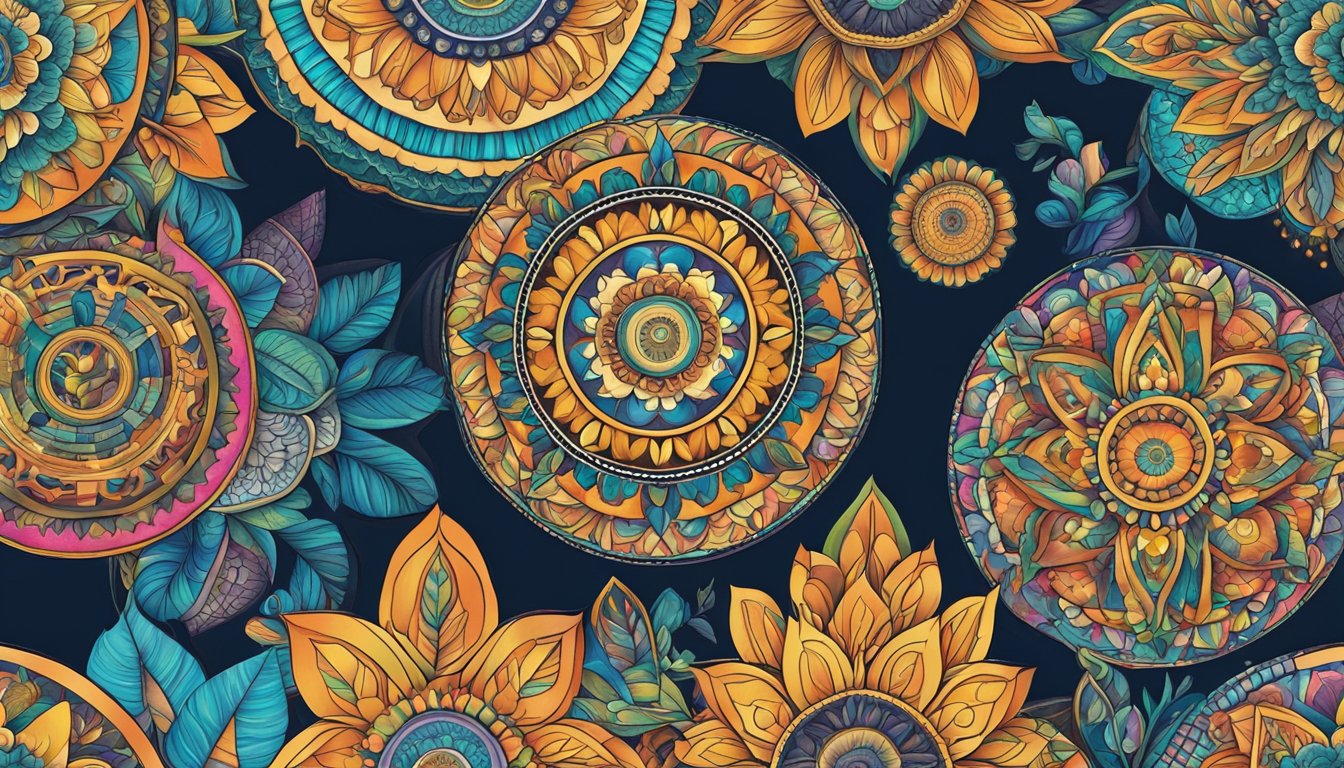
Mandalas have infused modern fashion with their intricate patterns and spiritual symbolism, influencing a wide array of designs from casual wear to high-end couture.
Early Adoptions
In the late 20th century, designers began incorporating mandala patterns into fashion, seeing the potential in their intricate designs. Young designers took inspiration from traditional mandala shapes and symbols, weaving them into textiles aimed at an audience appreciative of bohemian and ethnic aesthetics.
- Late 1960s to 1970s: Youth subcultures adopted mandalas in their clothing, reflecting countercultural ideals.
- 1980s: Mandala motifs surfaced in haute couture, signaling a blend of spirituality and luxury.
Current Trends
The use of mandalas in fashion persists today, with a vast range of garments and accessories sporting these iconic designs.
- Clothing: Mandala prints are common in:
- T-shirts
- Dresses
- Swimwear
- Accessories: They adorn various fashion accessories such as:
- Scarves: Often silk or cotton, featuring vibrant mandala prints.
- Jewelry: Earrings, necklaces, and bracelets may incorporate mandala shapes in their design.
- Bags: Totes and handbags frequently exhibit colorful mandala patterns.
- Footwear: Sneakers and sandals sometimes include mandala-inspired details or prints.
Designers continue to leverage the visual appeal and supposed calming effect of mandalas in their collections, bridging historic tradition with modern style preferences.
Design Process
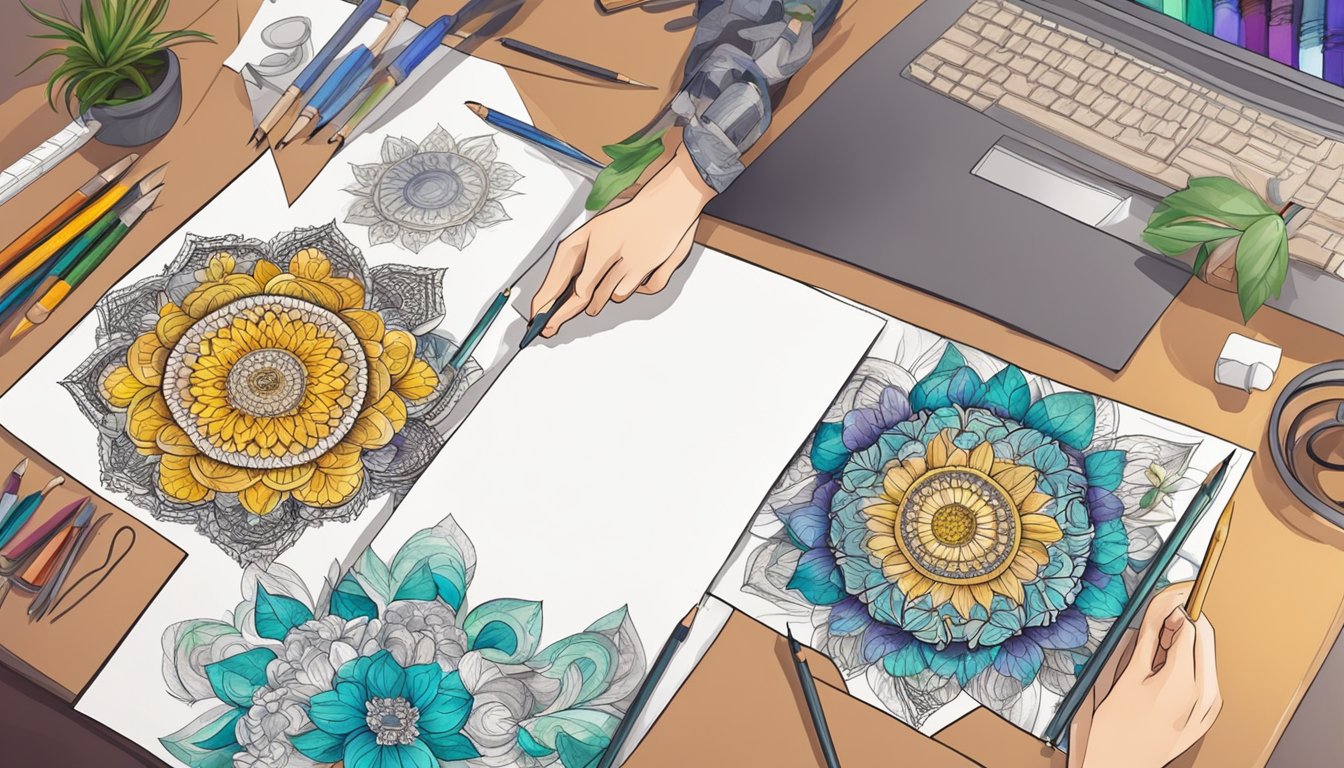
The design process for integrating mandalas into fashion involves a meticulous approach to selecting patterns and ensuring cultural sensitivity. Designers must balance aesthetic appeal with the traditional significance of mandalas.
Incorporating Mandalas into Fabrics
Designers often start by choosing the right fabric that will showcase the mandala designs effectively. They consider factors like texture, drape, and color to ensure the fabric complements the intricacy of mandala patterns. Common choices include:
- Silk: For its lustrous sheen and elegant flow.
- Cotton: Preferred for its versatility and comfort.
- Polyester blends: For durability and vibrant color retention.
Next, the method of transferring the mandala design onto the fabric is crucial. Printing techniques like screen printing and digital printing are popular for their precision and color versatility. Embroidery is another method used for a tactile, handcrafted feel.
Mandala Patterns and Symbols
When fashion designers introduce mandala patterns into their collections, they focus on both visual appeal and the symbols’ meanings. Mandalas can represent various themes such as balance, harmony, and unity, which are conveyed through specific shapes and arrangements:
- Circles: Symbolize wholeness and eternity.
- Squares or T-shapes: Can represent stability and balance.
- Floral patterns: Often signify growth and rebirth.
A designer may create a custom pattern that integrates traditional symbols with a modern twist. Each design is carefully planned out, often starting with a hand-drawn sketch that is later digitized for production. Color selection is integral to the process, with palettes chosen to enhance the mandala’s visual impact and symbolic meaning.
Fashion Categories Featuring Mandalas
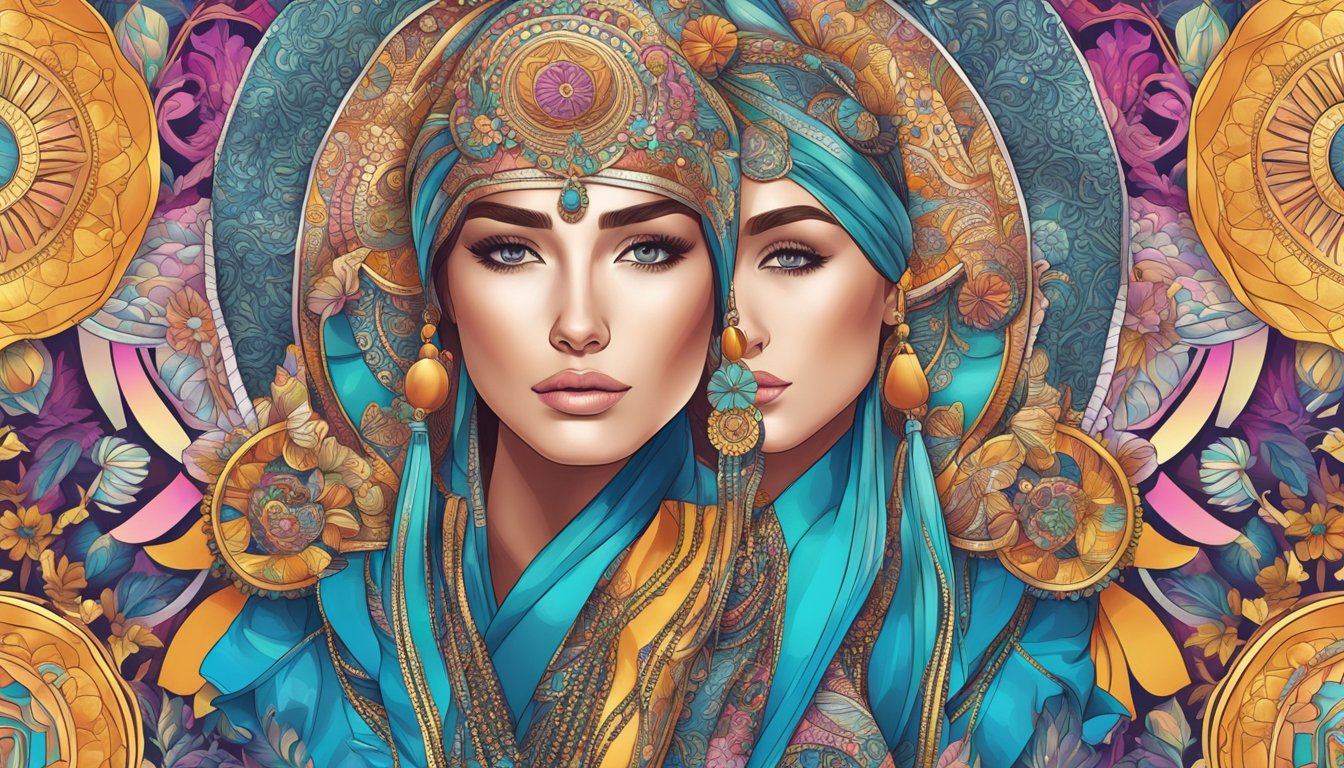
Incorporating the intricate designs of mandalas into fashion has brought a unique and aesthetic appeal to various clothing and accessory lines. They provide a sense of harmony and balance, elevating the visual interest of garments and personal adornments.
Casual Wear
Mandalas infuse casual wear with vibrant patterns and symbolic meaning. T-shirts and tank tops often feature mandala prints as a central graphic, turning a simple piece of clothing into a statement. Leggings and shorts with smaller mandala motifs create a subtle yet engaging effect, perfect for everyday wear or yoga sessions.
- T-shirts: Central mandala print, often in bright, contrasting colors.
- Leggings: All-over mandala pattern; balance between design and wearability.
Formal Attire
In formal attire, mandalas contribute to the elegance and sophistication of the garments. Dresses might display embroidered mandalas on the bodice or as delicate hem accents. Suits can incorporate mandalas through lining patterns or pocket squares, adding a touch of personal flair.
- Dresses: Embroidered mandala accents, typically around neckline or hem.
- Suits: Mandalas in lining or as subtle details on pocket squares.
Accessories and Jewelry
Mandalas have a significant presence in accessories and jewelry, where they can be both eye-catching and spiritually significant. Scarves might showcase mandala patterns in their entirety, while watches can feature mandalas on their faces. Jewelry such as necklaces and bracelets often bear mandalas, allowing these intricate designs to serve as focal points.
- Scarves: Large, full-pattern mandala designs.
- Jewelry: Necklaces and bracelets with mandala charms or pendants.
Consumer Reception
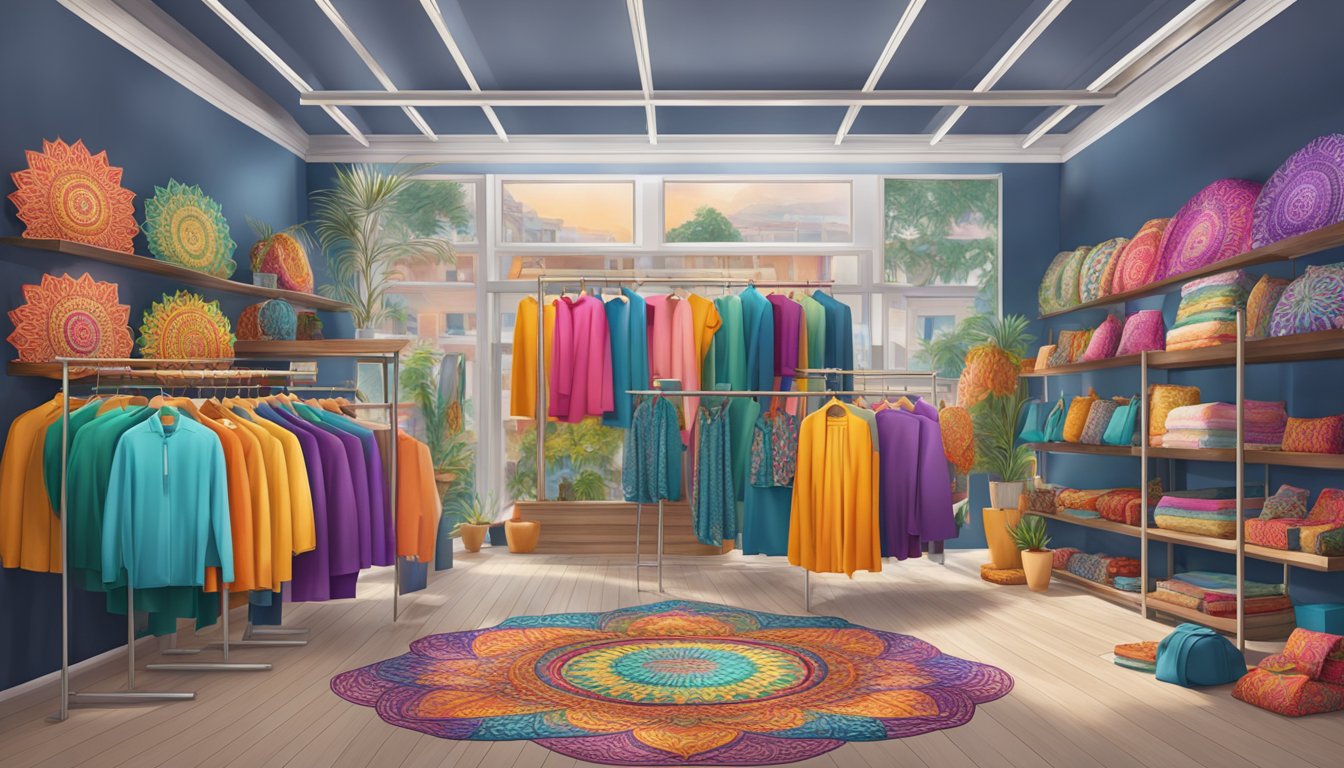
Mandalas have resonated well with consumers, leading to a distinct presence in fashion and a positive impact on culture.
Market Demand
Market analyses show a steady increase in the sale of mandala-patterned clothing and accessories. Particularly among millennials, mandala prints on various items such as T-shirts, dresses, scarves, and handbags are in demand. Online searches for mandala-themed fashion have seen a 25% increase over the past year, indicating a growing interest in these designs.
Impact on Fashion Culture
The incorporation of mandalas in fashion has transcended mere aesthetics, influencing fashion culture with its symbolic significance. They’ve become a marker of mindfulness and spirituality in wardrobe choices, particularly among consumers interested in wellness and self-expression. As an example:
- Yoga apparel: Mandala prints are common, often seen as bringing an element of focus and intention to practice.
- Accessories: Earrings, necklaces, and even watches with mandala motifs are popular, suggesting a preference for meaningful jewelry.
Sustainability and Ethical Production
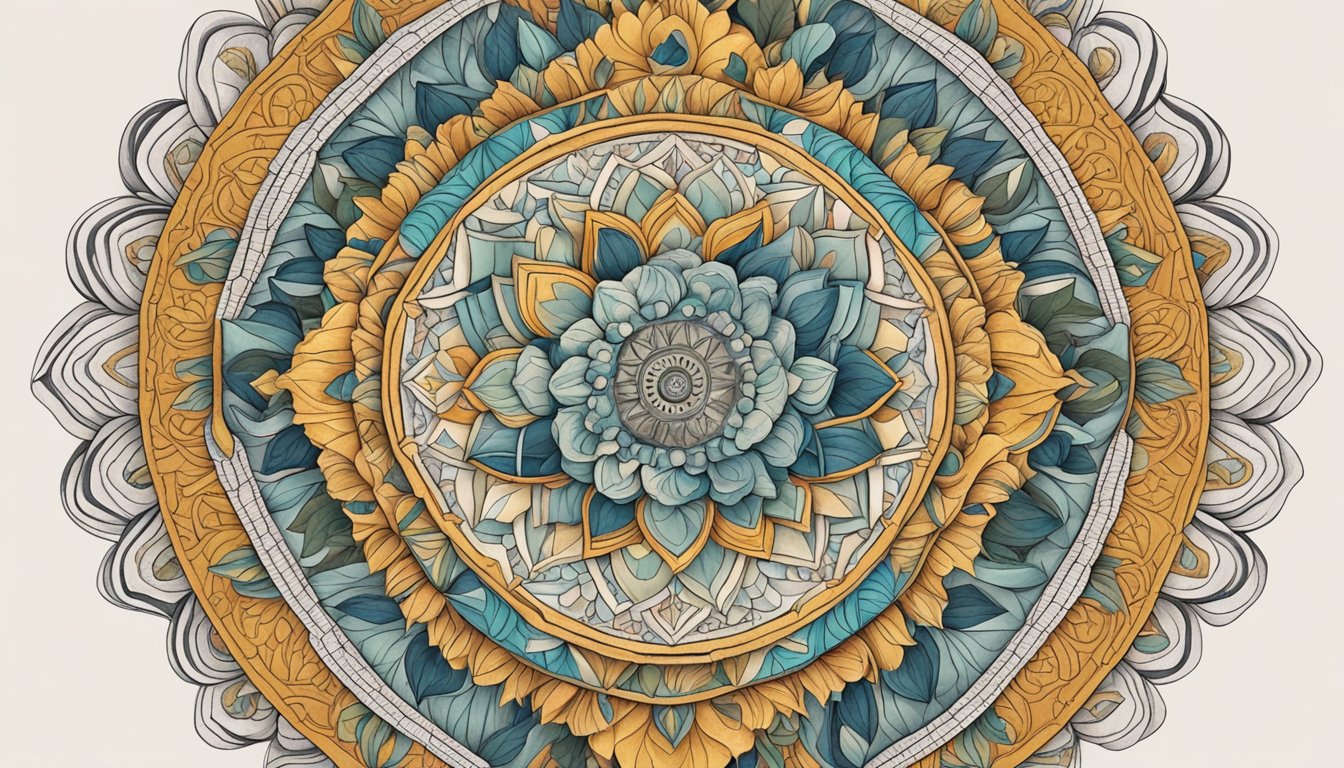
Incorporating mandalas into fashion involves more than just aesthetic considerations; it also requires a commitment to sustainability and ethical practices in production.
Eco-Friendly Practices
Materials: Many fashion brands that utilize mandala patterns are transitioning to organic cotton, recycled polyester, and sustainable dyes. These materials are chosen for their lower environmental impact, as they help to reduce the fashion industry’s carbon footprint and water usage.
- Organic Cotton: Grown without synthetic fertilizers or pesticides.
- Recycled Polyester: Made from post-consumer plastic bottles.
- Sustainable Dyes: Derived from natural sources, they minimize harmful runoff.
Manufacturing: They often implement waste-reducing techniques, such as digital printing and pattern optimization, to ensure that fabric usage is efficient and environmentally friendly.
- Digital Printing: Less dye waste and water usage than traditional methods.
- Pattern Optimization: Minimizes fabric scraps during the cutting process.
Ethical Branding
Fair Labor Practices: Brands are increasingly recognizing the importance of fair labor practices and are ensuring that workers involved in creating mandala-adorned clothing and accessories receive fair wages and work in safe conditions.
- Worker Welfare: Safe working environment, reasonable working hours, and healthcare benefits.
- Fair Wages: Compensation that reflects the skill and labor involved in production.
Transparency: Consumers are showing a preference for brands that are openly sharing their supply chain processes. Companies are responding by providing detailed information regarding the origin of the materials used and the manufacturing conditions.
- Supply Chain: Publicizing the journey from raw material to finished product.
- Accountability: Holding themselves responsible for the social and environmental impacts of their production.
Future of Mandalas in Fashion
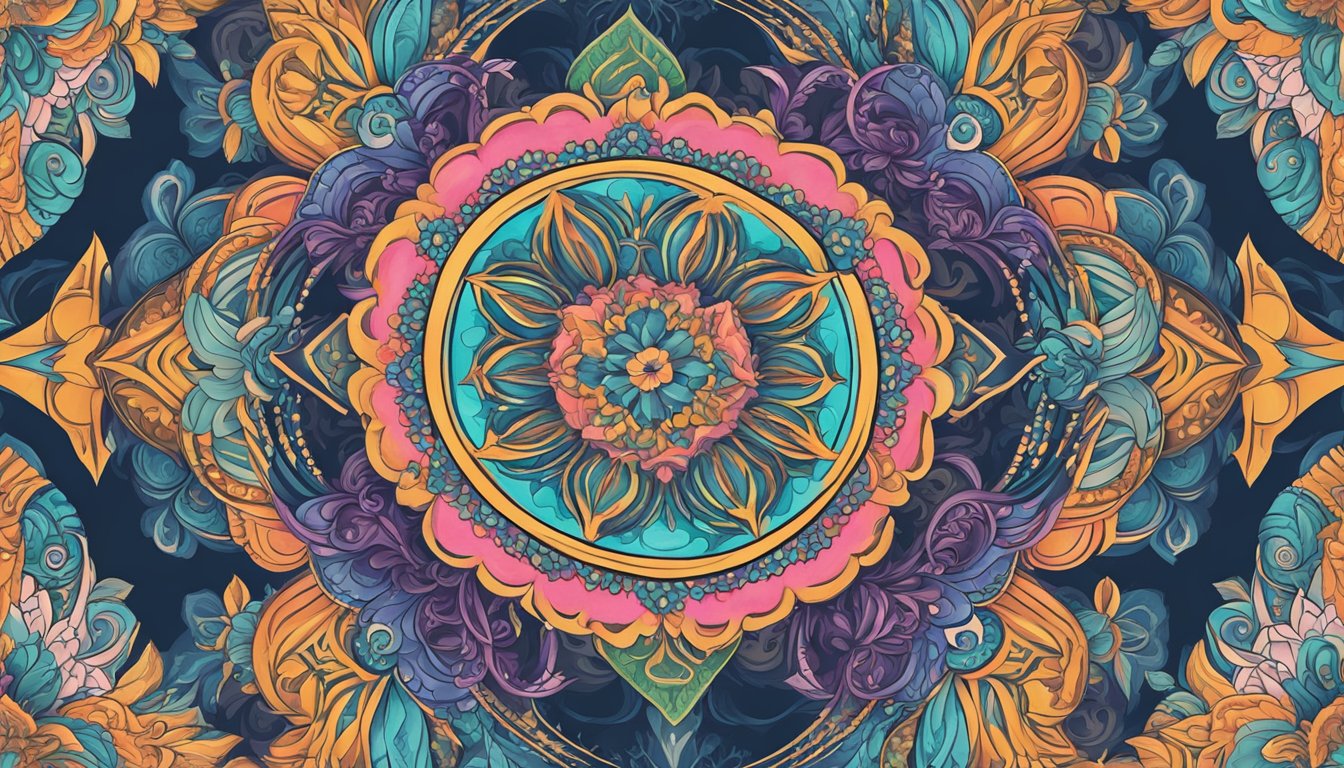
The mandala motifs are anticipated to evolve and integrate seamlessly with modern fashion trends and innovative technologies.
Innovative Uses
Designers are finding fresh ways to incorporate mandalas into wearable art. They might create dresses with interactive mandala patterns or use mandalas in multifunctional accessories like scarves that can be styled in various ways. There’s also a growing trend of custom-made mandala pieces, where customers can have input on the design, making the fashion item unique and personal.
Fabrics are being treated as canvases, with mandalas appearing in unexpected places such as linings of jackets or hidden segments of clothing, offering a surprise element to classic pieces. This innovative approach keeps the tradition alive while making fashion statements more dynamic and personalized.
Technological Advancements
The integration of technology with fashion has opened new avenues for mandala designs. Advanced fabric printing techniques, such as 3D printing and laser cutting, allow for precise and intricate mandala patterns, which were once difficult to achieve by hand.
Wearable technology incorporates mandalas in ways that interact with the user. Imagine a smartwatch band with a mandala that changes colors to reflect the wearer’s mood or wellness apps that use mandala graphics as part of their user interface for a soothing, aesthetic appeal. The potential for mandala-themed interfaces and features in tech accessories is significant, blending traditional designs with contemporary functions.


